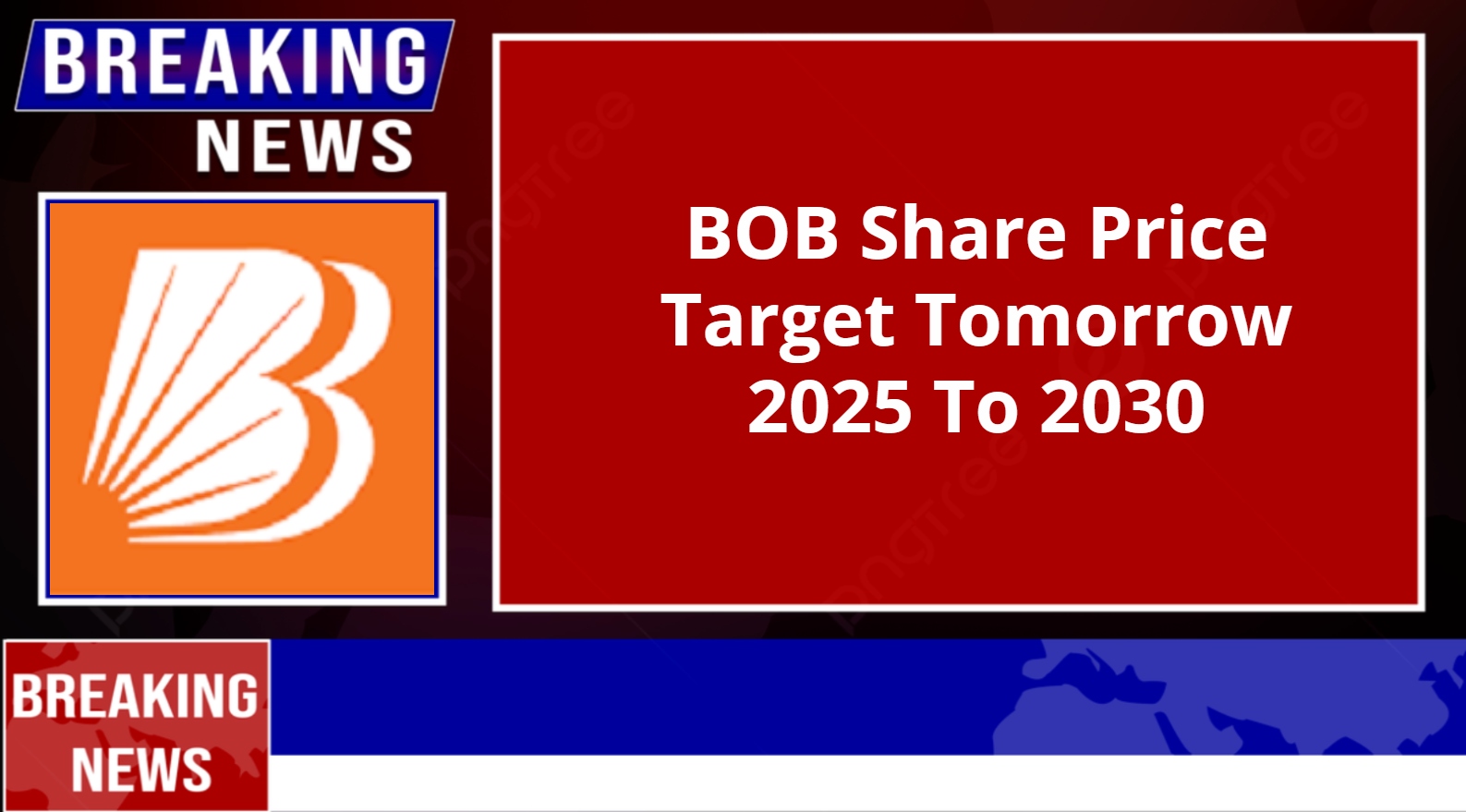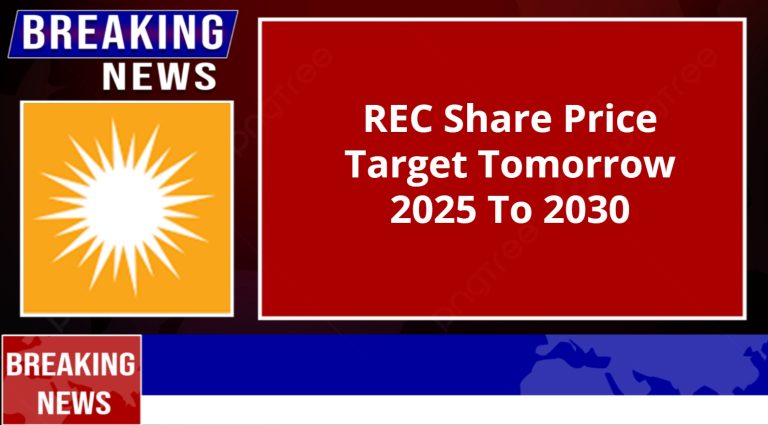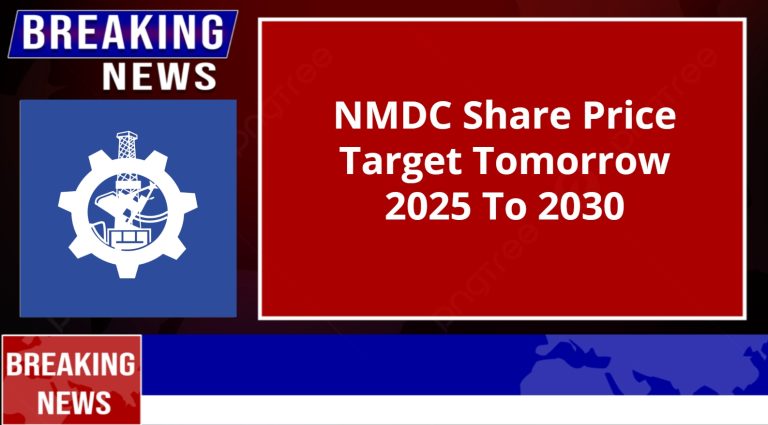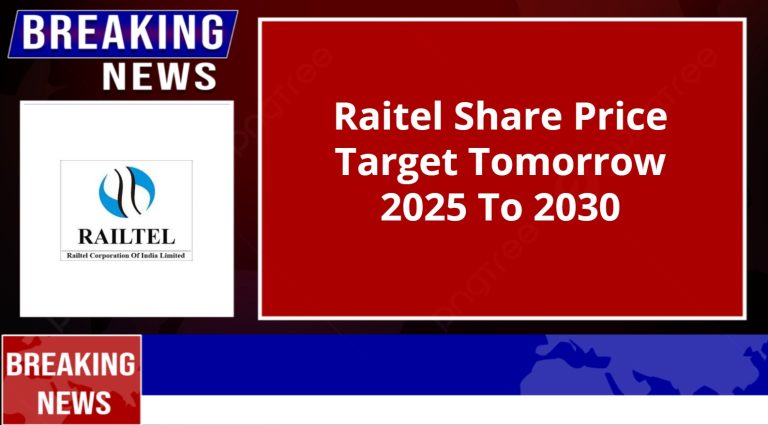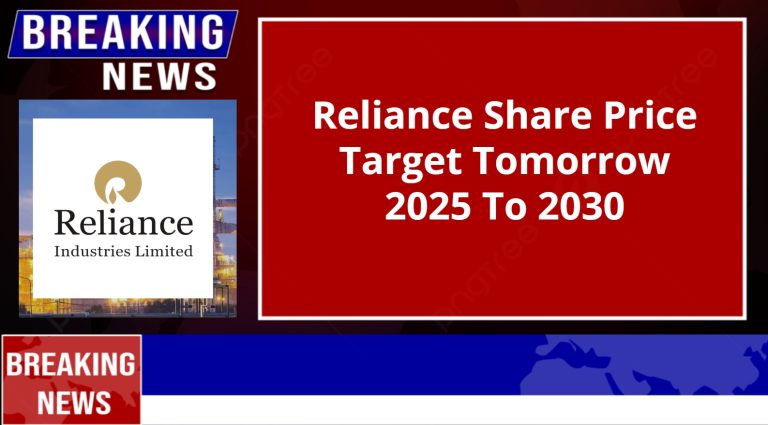BOB Share Price Target Tomorrow 2025 To 2030
Bank of Baroda (BOB) is one of India’s leading public sector banks, offering a wide range of financial services, including retail banking, corporate banking, and digital banking. As a government-backed bank, BOB enjoys strong trust among investors. Its share price is influenced by factors like loan growth, interest rates, economic conditions, and government policies. BOB Share Price on NSE as of 28 March 2025 is 228.10 INR.
Current Market overview of BOB Share Price
- Open: 230.98
- High: 233.75
- Low: 227.60
- Previous Close: 230.98
- Volume: 7,684,437
- Value (Lacs): 17,522.05
- VWAP: 230.96
- Mkt Cap (Rs. Cr.): 117,917
- Face Value: 2
- UC Limit: 254.07
- LC Limit: 207.88
- 52 Week High: 299.70
- 52 Week Low: 190.70
BOB Share Price Target Tomorrow 2025 To 2030
| BOB Share Price Target Years | BOB Share Price |
| 2025 | INR 300 |
| 2026 | INR 350 |
| 2027 | INR 400 |
| 2028 | INR 450 |
| 2029 | INR 500 |
| 2030 | INR 550 |
BOB Share Price Chart
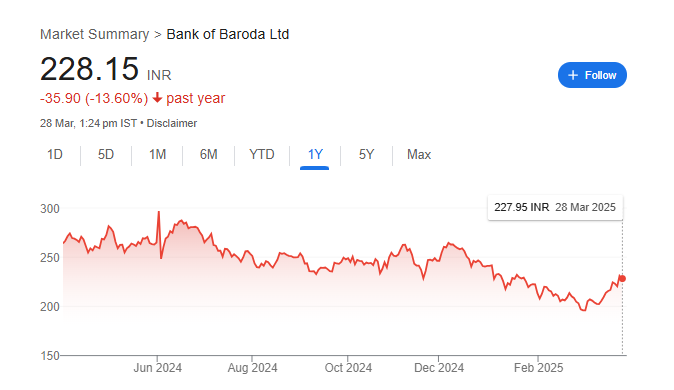
BOB Shareholding Pattern
- Promoter: 64%
- FII: 8.9%
- DII: 18.1%
- Public: 9%
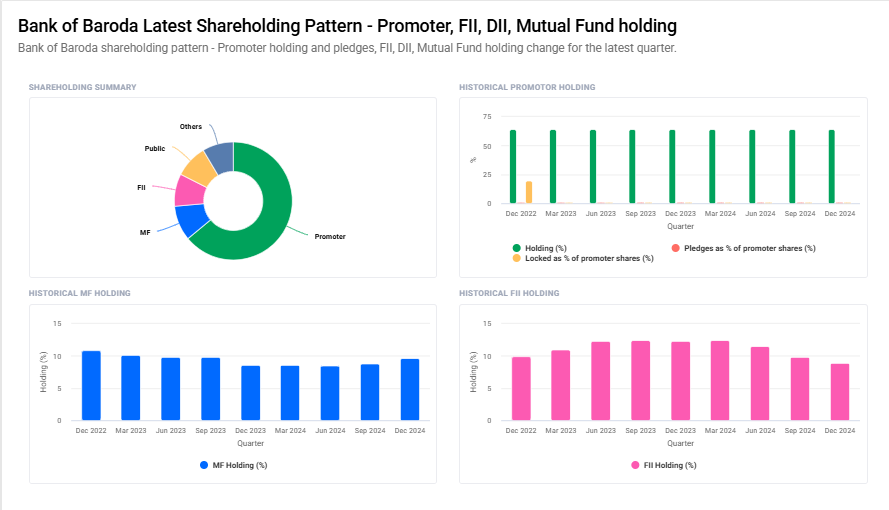
Key Factors Affecting BOB Share Price Growth
-
Loan Growth & Credit Demand
Bank of Baroda’s (BOB) share price is influenced by how much it expands its loan book. Higher demand for loans from businesses and individuals can boost its revenue and profits, supporting share price growth. -
Interest Rate Trends
When interest rates rise, banks like BOB earn more from loans, increasing profits. However, very high rates can reduce borrowing demand. The balance between lending and deposit rates impacts the bank’s earnings and stock performance. -
Asset Quality & NPAs
A lower percentage of non-performing assets (NPAs) means the bank is managing its loans well. If BOB successfully reduces bad loans and recovers outstanding amounts, investor confidence improves, pushing share prices up. -
Government Policies & Support
As a public sector bank, BOB benefits from government backing. Policies related to banking reforms, financial inclusion, and economic stimulus can positively impact its business and stock price. -
Profitability & Operating Efficiency
Higher net profits, controlled expenses, and strong financial performance drive investor interest. If BOB improves its operational efficiency, cost management, and digital banking services, it can attract more investment. -
Economic & Market Conditions
India’s economic growth, inflation levels, and global financial trends affect BOB’s stock. A strong economy leads to higher credit growth, while economic slowdowns can impact loan repayments and earnings. -
Foreign & Institutional Investments
Increased investments from foreign institutional investors (FIIs) and domestic institutions signal confidence in the bank’s future. If more investors buy BOB shares, the stock price can gain upward momentum.
Risks and Challenges for BOB Share Price
-
High Non-Performing Assets (NPAs)
One of the biggest risks for Bank of Baroda (BOB) is bad loans or NPAs. If borrowers fail to repay loans, the bank has to set aside money as provisions, reducing profits and negatively affecting its share price. -
Interest Rate Fluctuations
If interest rates fall, BOB’s earnings from loans may decrease, impacting overall profitability. On the other hand, very high rates can reduce loan demand, slowing down the bank’s growth. -
Regulatory & Government Policies
Being a public sector bank, BOB must follow government decisions on interest rates, loan waivers, and banking regulations. Unfavorable policies, such as forced lending to weaker sectors, can impact its financial health. -
Global & Domestic Economic Slowdown
If India’s economy slows down or global financial markets face crises, credit demand may drop, and loan defaults could rise. This can affect BOB’s growth and weaken investor confidence in its stock. -
Competition from Private Banks & Fintech
Private sector banks and digital fintech companies are growing rapidly, offering better customer services and faster loan approvals. If BOB fails to modernize and stay competitive, it could lose market share, affecting its stock performance. -
Cybersecurity & Digital Risks
As banking goes digital, risks like cyberattacks, online fraud, and data breaches increase. Any security issues can damage customer trust, leading to financial losses and a drop in share price. -
Foreign & Institutional Investor Sentiment
Large institutional investors, including foreign funds, play a crucial role in BOB’s stock movement. If these investors pull out due to negative financial performance or global uncertainty, the share price may decline.
Read Also:- Garden Reach Shipbuilders Share Price Target Tomorrow 2025 To 2030

